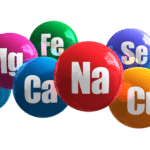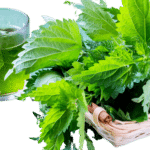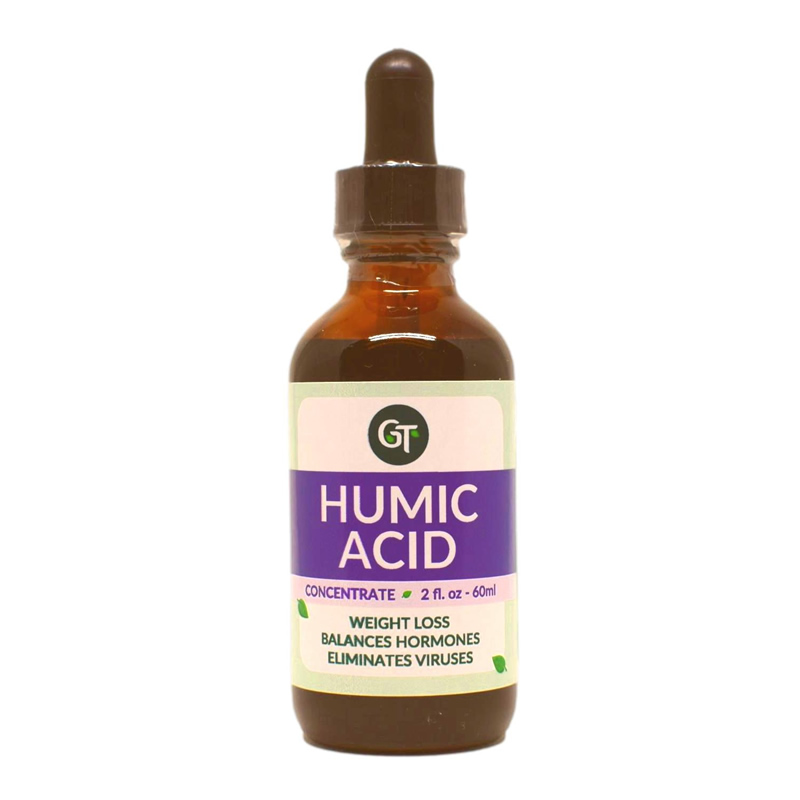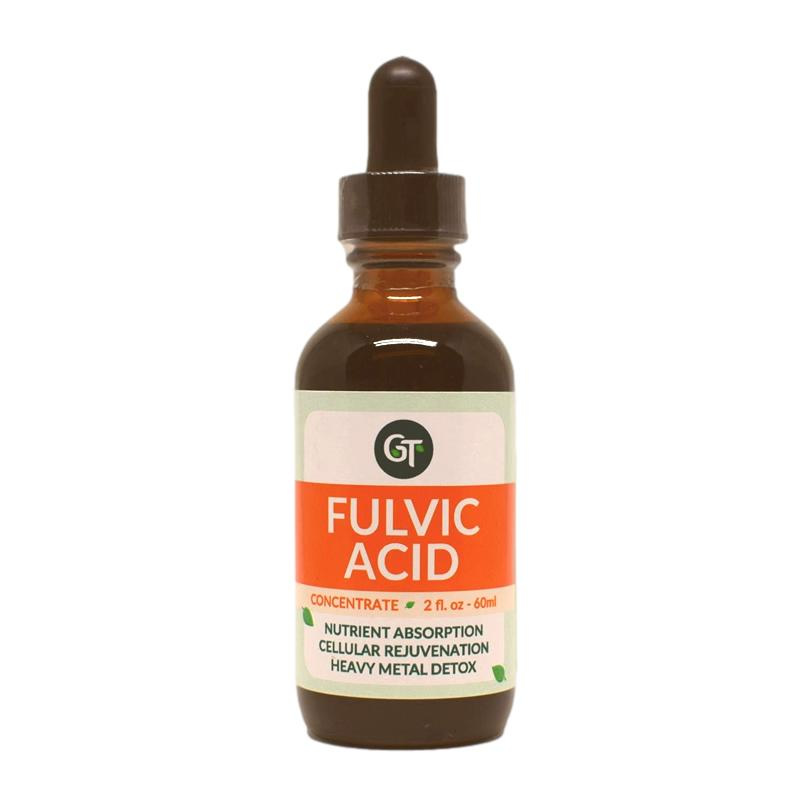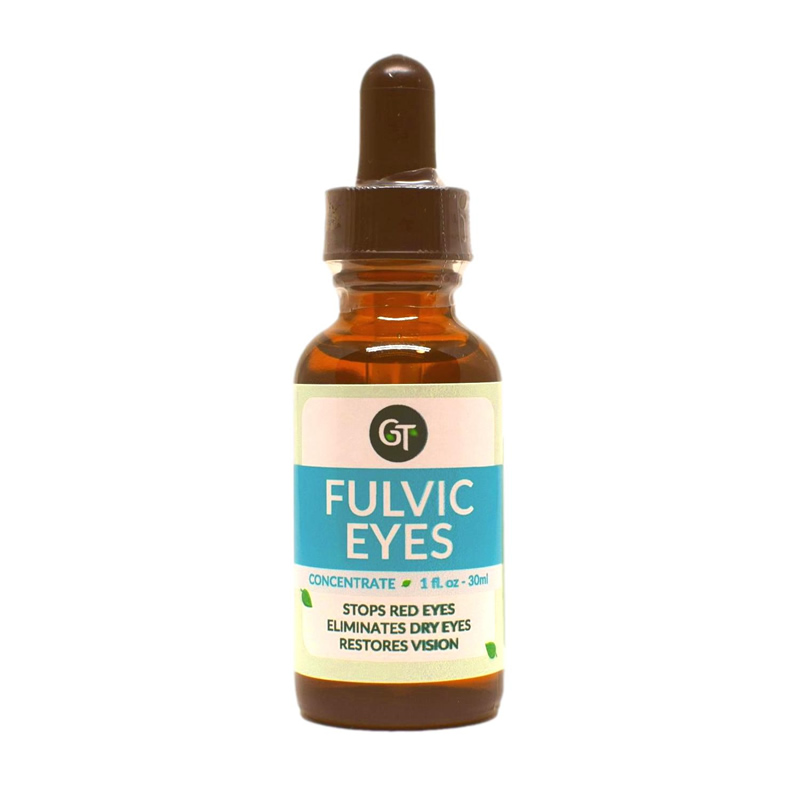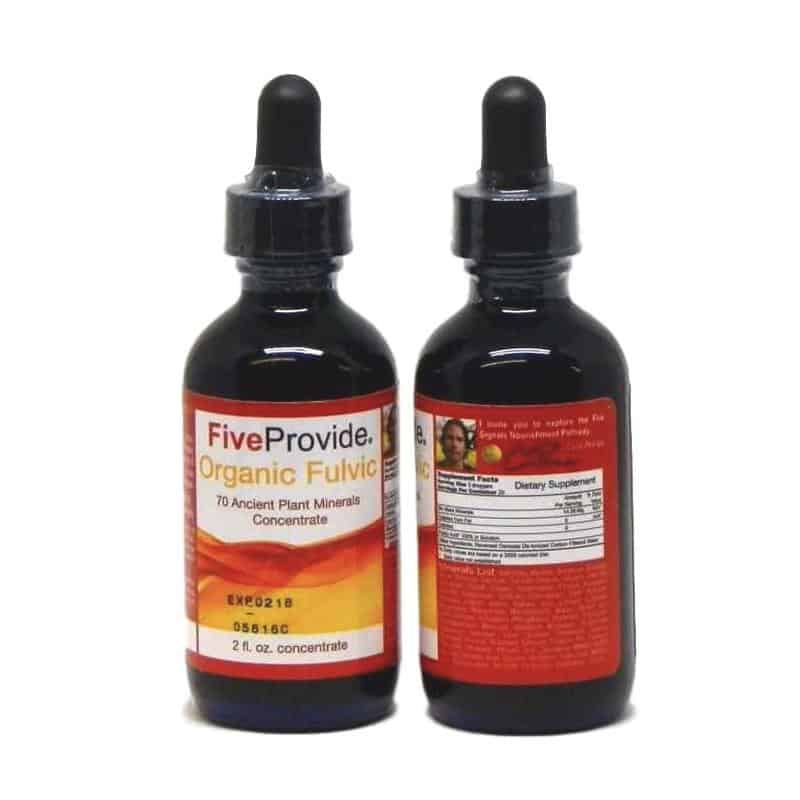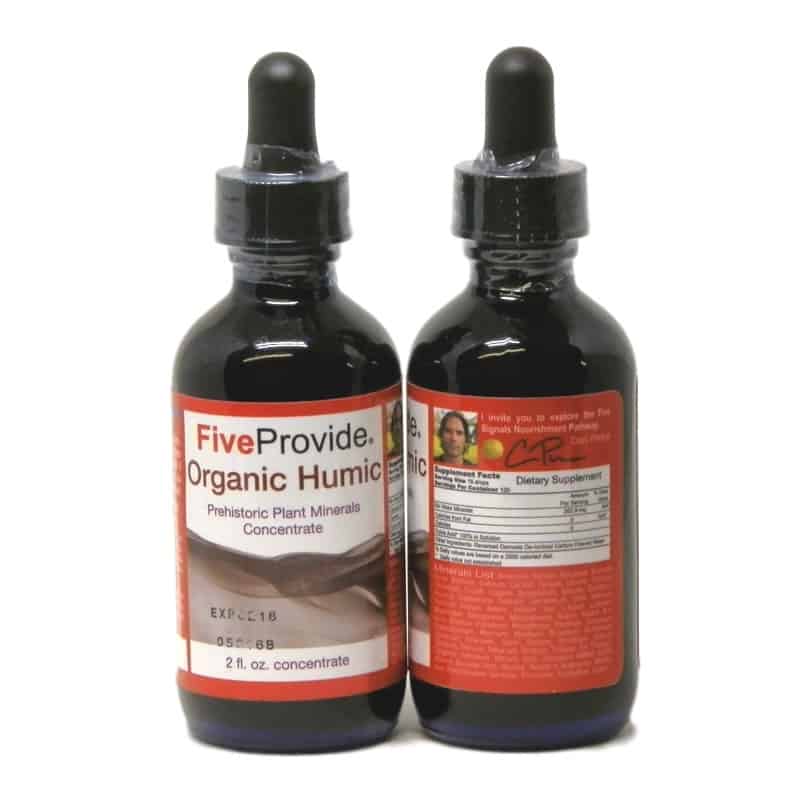No products in the cart.
Humic and Fulvic Acids Benefits – Part 2 of 2
Cancer Antiviral
Humic substances are nature’s most powerful antiviral. New studies continue to show virus – cancer connection.
The relationship of viruses to cancer is not too surprising, considering the mounting evidence that shows that there is a missing link in our food chain that is allowing viruses to run rampant in their attack on humans, animals, and even our food crops. What may surprise you most is that drug companies have sponsored extensive secret studies for the purpose of profiting from this dire situation, when in fact inexpensive and effective natural solutions exist. This entire website documents the relationships. Of immense interest is the fact that medical hospital studies show that difficult viral respiratory illnesses common in children are readily resolved with fulvic acid dietary supplementation. Fulvic acid is a humic extract common to rich organic humus soil and also certain ancient plant deposits. Many medical studies show that humic substances, especially fulvic acids, have the power to protect against cancer AND the related cancer causing viruses. Studies often show reversal of deadly cancers and tumors using special humic substance therapies. Many studies and extensive references exist, a few of which are referenced below.
Search keywords: respiratory, tumor, virus, cancer Also see the following articles for more information:
- Common Virus Shows Link To Brain Cancer In Children
- Incurable HIV or Aids virus is destroyed by humic extracts, epidemic now has over 33 million people infected
- Fulvic acid’s diverse spectrum of immune responses
- Cancer is second leading cause of death in the US, humic extracts arrest cancer growth according to medical studies
- Research on the development of the medicinal applications of Fulvic acid in China
References:
- R. Ansorg, et al; Studies on the Antimicrobial Effect of Natural and Synthetic Humic Acids; Arzeimittelforschung 1978, 28(12), pp. 2195-2198. Treatment of HIV Infection with Humic Acid; WO95/08335 – PCT; Mar. 30, 1995.
- K.D. Thiel; et al; Comparison of the in Vitro Activities of Ammonium Humate and of Enzymically Oxidized Chlorogenic and Caffeic Acids Against Type 1 and Type 2 Human Herpes Virus; Pharmazie 1981, 36(1), pp. 50-53.
- H. Schultz; Investigations on the Viricidal Effects of Humic Acids in Peat-Mull; Dtsch Tierarztl Wochenschr Jul. 1, 1965. 72(13), pp. 294-297.
- R. Klocking, et al; Antiviral Properties of Humic Acids; Experientia May 15, 1972, 28(5), pp. 607-608.
- G. Sydow, et al; The Effect of Phenolic Polymers on Retroviruses; Pharmazie Dec. 1986, 41(12), pp. 865-868.
- R. Klocking and M. Sprossig; Experientia 1972 28(5)-pp. 607-608.
- R. Klocking, et al; Antiviral Activity of Phenolic Polymers Against Type 1 Herpesvirus Hominis; Pharmazie Aug. 1978, 33(8), p. 539.
- F. Schiller, et al; Results of an Oriented Clinical Trial of Ammonium Humate for the Local Treatment of Herpesvirus Hominus (HVH) Infections; Dermatol Monatsschr Jul. 1979, 165(7), pp. 505-509.
- R. Klocking; Interaction of Humic Acids and Humic-Acid-Like Polymers with Herpes Simplex Virus Type 1; Humanic Substances in the Aquatic and Terrestrial Environment, Berlin 1991, pp. 408-412.
- K.D. Thiel, et al; In Vitro Studies of the Antiviral Activity of Ammonium Humate Against Herpes Simplex Virus Type 1 and Type 2; Zentralbl Bakteriol (Orig. A) Nov. 1977, 239(3), pp. 304-321.
- J. Schneider, et al; Inhibition of HIV-1 in Cell Culture by Synthetic Humate Analogues Derived From Hydroquinone: Mechanism of Inhibition; Virology 1996, 218(2), pp. 389-395.
- R. Mentel, et al; Effectiveness of Phenol Body Polymers Against Influenza Virus A/KRASNODAR/101/59/H2N2; Biomed Biochim Acta 1983, 42(10), pp. 1353-1356.
- J. Hills; et al; Inhibition of Several Strains of Influenza Virus Type A and B by Phenolic Polymers; Biomed Biochim Acta 1986, 45(9), pp. 1173-1179.
- K.I. Hanninen, et al; Synthesis and Characterization of Humic Acid-Like Polymers; The Science of the Total Environment 1987, 62, pp. 201-210.
- Klocking et al.-Interaction of Humic Acids and Humic-Acid-Like Polymers with Herpes Simplex Virus Type 1 Humic Substances in the Aquatic and Terrestrial Environment New York; Springer-Verlag 1989, pp. 407-412.
- Schols, et al; Selective Inhibitory Activity of Polyhydroxycarboxylates Derived From Phenolic Compounds
- Against Human Immunodeficiency Virus Replication; Journal of Acquired Immune Deficiency Syndromes 1991, 4(7), pp. 677-685.
- M. Cushman, et al; Synthesis and Anti-Hiv Activities of Low Molecular Weight Aurintricarboxylic Acid Fragments and Related Compounds; Journal of Medicinal Chemistry 1991, 34(1), pp. 337-342.
- Robert Gero, et al; Biochemical Study of Humus Action of a Proteolytic Enzyme on Natural and Synthetic Humic Polymers and Those of Microbial Origin-Ann Inst Pasteur (Paris) Dec. 1967, 113(6), pp. 903-909.
- M. Jakubiec; et al; Comparison of the Effect of Natural and Synthetic Humates and EDTA on the Growth of Escherichia coli; Abstract not available.
- R. Ansorg; et al; Studies on the Antimicrobial Effect on Natural and Synthetic Humic Acids; Arzneimittleforschung 1978, 28(12, pp. 2195-2198.
- M. Cushman, P. Wang, S. H. Chang, C. Wild, E. De Clercq, D. Schols, M.
- Goldman, and J. A. Bowen, J. Med.Chem. 1991, 34(1), 329-337
- Cushman, S. Kanamathareddy, E. De Clercq, D. Schols, M. E. Goldman, and J. A. Bowen, J. Med.Chem. 1991, 34(1), 337-342
- Schols, P. Wutzler, R. Klocking, B. Helbig, and E. De Clercq, J. Acquir.Immune Defic. Syndr. 1991, 4(7), 677-685
- Loya, R. Tal, A. Hizi, S. Issacs, Y. Kashman, and Y. Loya, J. Nat.Prod. 1993, 56(12), 2120-2125
- J. Schneider, R. Weis, C. Manner, B, Kary, A. Werner, B. J. Seubert, and U. N. Riede, Virology 1996, 218(2), 389-395
Cellular Regeneration
Cellular regeneration attributed to Fulvic acid electrolyte
Living cells are single bipolar mechanisms, meaning they have a positive and negative composition, and work similar to batteries. Cells are made up of a positively charged acidic central core or nucleus, which is surrounded by the negatively charged alkaline cytoplasm. The components are separated by semi-permeable membranes. Each cell is a single structural unit that functions as a member of the total living organism. Once a cell dies, and eventually in the natural scheme of things, comes into contact with the appropriate soil microbes, it will ultimately break down and turn into a humic substance.
Over 50% of hospital patients treated with humic acid for various chronic diseases noticed that they were able to sleep more relaxed. – Bingwen Su, Jiangxi Humic Acid, 3 (1985)
Research has shown that two very important components of humic substances are nucleic acids and amino acids, which are remnants from the nucleus, cytoplasm, and protein building blocks of once-living cells. Nucleic and amino acids are absolutely essential to all living things.
There are potentially thousands of individual nucleic and amino acids in humic substances. These nucleic and amino acids are preserved intact within humic substances, where they are believed to remain stable indefinitely. The nucleic acids consist of negatively charged DNA from the breakdown of the nucleus of cells, and positively charged RNA from the cytoplasm of cells, which also remain stable in humic substances.
Of interest here, are the nucleic acids and amino acids which are major constituents of the fulvic acid fraction of humic substances. Since fulvic acids are of low molecular weight, and water soluble on both sides of the pH scale, they are readily absorbed through semi-permeable membranes, and function actively in association with living cells.
Complexed into the fulvic, nucleic, and amino acid team, are innumerable essential minerals and rare earth elements. Fulvic acid contains literally hundreds of complex minerals, which include traces of virtually every element listed in the Periodic Table. Together, all of these components function in unison, as fulvates (salts of fulvic acid), making fulvic acid an extremely powerful electrolyte.
Hospital studies show that patients with normally incurable epidemic Hemorrhagic Fever were able to be successfully treated with humic extracts, which stopped bleeding, restored circulation, removed clots, was anti-viral, and significantly bolstered and regulated the immune system. Yinzhang Cui, Humic Acid, 1 (1991)
Because of its many nutritional components and electrolytic power, fulvic acid has instant cellular revitalizing, replenishing, and nourishing characteristics unlike anything else. Fulvic acids electrolytic value also has been shown to increase permeability of bio-membranes, which means that it can sensitize cell membranes for better absorption or assimilation of other things in its presence.
It is essential that the electrical potential of all cells remain balanced and “charged”. A high quality electrolyte is essential for proper cellular function. An electrolyte is a substance that dissolves in water or other suitable medium, that will conduct electrical current. An electrolyte is essential to cells because in molecular processes it permits electrons to be set loose, transferring electrical current, by allowing the flow of ions. Fulvic acid is a polyelectrolyte which means “much electric.”
The value of an electrolyte can be shown by an experiment that was done by researchers on a giant amoeba, which is a microscopic single cell animal. Under a microscope the electrolytic potential of the amoeba, which is normally 20 millivolts, was depressed to zero. The researchers then noticed astonishing changes as the amoeba become dysfunctional, the outer membrane then ruptured in several places, and internal components began to flow out into the surrounding fluid. At that point researchers visually concluded that the form and structure of the amoeba had disintegrated and it was for all purposes dead. Upon increasing the electrolytic charge, the form of the amoeba reconstructed and became active and healthy again. This same test was repeated many times with the same results.
“The cell is immortal. It is merely the fluid in which it floats which degenerates. Renew this fluid at intervals, give the cells what they require for nutrition and, as far as we know, the pulsation of life may go on forever.” -Dr. Alexis Carrel, Nobel Prize in Medicine
Although plant and animal cells have slightly different makeup, leading scientists agree that their metabolic functions, components, and requirements are exactly the same. For instance; in plants there are chlorophyll molecules which are the light receptors responsible for the photosynthesis process. These chlorophyll molecules are very similar in structure to the heme molecule of human red blood cells (hemoglobin).
Extensive hospital eye clinic studies using humic extracts showed 100% success in curing eye diseases caused by virus, bacteria, or fungus, also healing ulcerous wounds, relieving inflammation, and stopping hemorrhaging, without side effects.Guofan, Tang, Jiangxi Humic Acid, 3 (1984)The physical health of all organisms, both plant and animal, can be expressed in terms of electrical potential. It is essential that the electrolytic potential of all organisms be maintained at optimum levels, otherwise weakness, degenerative disease, and eventual death will result.
Fulvic acid has been proven to be one of natures most perfect and powerful organic polyelectrolytes. Because many of fulvic acids constituents where once involved in photosynthesis, the fulvic retains that latent energy potential stored inside its solar charged molecular structure, which can balance cell life on the molecular level, providing regulated positive and negative charges as needed, acting as both a donor or acceptor. Within the complexities of fulvic acids, the individual molecules are similar but not identical. This variation in makeup allows a variety of possible reactions, positive or negative, or in some cases alternating, to assist the balance.
Because of its unique polyelectrolytic properties, fulvic acid can influence the formation or transmutation of new species of metal ions. This means fulvic acid can convert existing minerals into new minerals.
References:
- A Bipolar Theory Of Living Processes; G. Crile, (1926); McMillan, New York; and, The Phenomenon Of Life; G. Crile, Unpublished.
- Jackson, William R., PhD. Humic, Fulvic, And Microbial Balance: Organic Soil Conditioning, 1993, Jackson Research Center, Evergreen, CO.
- Williams, Dr. Roger J. Nutrition Against Disease, (1980), Bantem Books (leading scientist, discovered the B-vitamin pantothenic acid) Baker, W. E. (1973). Geochimica et Cosmochimica Acta, 37, 269-28. Rashid, M.A. (1985). Geochemistry of marine humic substances. New York: Springer-Verlag.
- Senesi, N., Chen, Y., & Schnitzer, M. (1977b). The role of humic acids in extracellular electron transport and chemical determination of pE in natural waters. Soil Biology and Biochemistry, 9, 397-403.
- Shnitzer, M., & Dodama, H. (1977). Reactions of minerals with soil humic substances. In J. B. Dixon & S. B. Weed (Eds.), Minerals in soil environments(Chap. 21)). Madison, WI: Soil Science Society of America.
- Kervran, C. Louis. Biological transmutations, and their applications in chemistry, physics, biology, ecology, medicine, nutrition, agriculture, geology. 1972, Swan House Publishing Co.
- Christman, R.F., & Gjessing, E. T. (1983). Aquatic and terrestrial humic materials. The Butterworth Grove, Kent, England: Ann Arbor Science. Also:
- Prakash, A. (1971). Terrigenous organic matter and coastal phytoplankton fertility. In J.D. Costlow (Ed.), Fertility of the sea, 2, 351-368. (Proceedings of an International Symposium on Fertility of the Sea, Sao Paulo, Brazil, London, and New York: Gordon and Breach Science).
Fibromyalgia
Fibromyalgia is a syndrome rather than a specific disease. As such there are a complex of symptoms which may or may not be present in any particular clinical instance of fibromyalgia. The most common symptoms, however, can all be helped by fulvic acid complexes as fulvic acid has been shown to be effective in reducing muscle and joint pain, improving sleep, and decreasing fatigue. Generalized muscle stiffness should also be reduced.
Bath Therapy
Fulvic acid and Humic extract topical use and bath therapies show amazing clinical results
Fulvic acid and humic extract water solutions can safely be applied as skin treatments. Directly applied or as bath therapies, fulvic and humic extracts are safe in amounts as high as 10 percent weight-by-volume. Medical doctors have found that extended saturation of the skin by direct application, or use as a bath therapy can be highly successful in treating many external and internal conditions. Clinical studies show that ulcerous skin problems and various skin diseases can be eliminated. Studies by a U.S. doctor have shown that fulvic acid or humic extract bath treatments can cure the common cold or flu in just one or two session, stopping them dead in their tracks.
Hospital patients with skin ulcers had 92.2% success rate when treated with fulvic acid and humic extract baths.
Yuan, Shenyuan; Fulvic Acid, 4 1988; in Application of Fulvic acid and its derivatives in the fields of agriculture and medicine; First Edition: June 1993
Medical doctors in Europe, China, and even the United States, have discovered that clinical bath treatments using specially prepared humic and fulvic extracts have unparalleled healing power with many serious diseases. Patients with severe rheumatoid arthritis and other bone, joint, tendon, and muscle autoimmune disorders, exhibit healing effects that are unrivaled. Often after a few weeks of daily bath sessions, patients are significantly relieved of pain and inflammation, and are restored to health.
Medical test results indicate that humic extracts enhance the human immune system, which results in the cure of viral diseases.
Jingrong Chen et al, jiangxi humic acid, 2 (1984)
Literally hundreds of well documented clinical studies exist from hospitals, medical schools, and doctors from around the world. Internal use of fulvic acid also works well for many of these same conditions including the various rheumatoid and autoimmune disorders.
Bath treatments, or lengthy periods of moist localized saturation, are extremely potent therapies for many conditions. Such treatments are remarkable effective. Extensive clinical studies support the exceptional safety of both topical and bath therapies.
Diabetes
Global presence of Diabetes mellitus now epidemic, human clinical studies show Fulvic acids offer significant help
Diabetes mellitus responsible for enormous world economic burden
A December supplement to the British Diabetic Association journal, Diabetic Medicine, warned that the prevalence of diabetes worldwide is expected to nearly double in the next twelve years. Dr. Paul Zimmet and colleagues for the International Diabetes Institute and the World Health Organization report that diabetes mellitus “appears to be epidemic in many regions of the world” and will double and could even triple by the year 2010.
With fulvic acid, diabetes patients became more energetic and the tingling, painful feeling and numbness experienced in the nerve endings disappeared or were reduced.
Yuan, Shenyuan; et al; Application of Fulvic acid and its derivatives in the fields of agriculture and medicine; First Edition: June 1993
Related reports were quoted as saying that “The corresponding burden of complications and premature mortality resulting from diabetes will constitute a major public health problem for most countries.” Dr. George Alberti, Vice Chair of the British Diabetic Association says, “In the short term, it is vital that attempts to change lifestyles are stepped up and that investment in finding a cure is increased. In the longer term, it is equally important that we ensure that we have the medical infrastructure in place to deal with the problem.”
Scientists found that fulvic acids show significant success in preventing and combating free radical damage to pancreatic islet B cells, which is the widely accepted cause for diabetes mellitus. What they discovered was that the Fulvic acid preparation significantly increases superoxide dismutase (SOD) activity. Their clinical studies show that fulvic acids diminish the development and progression of diabetes, and assisted in the treatment.
Bhattacharya, S.K. Activity of shilajit on alloxan-induced hyperglycemia in rats. Fitoterapia, Volume LXVI, No 4, 1995, pg. 328.
The American Diabetes Association (ADA) recently concluded that “The economic burden of diabetes mellitus in the US is enormous.” In their February 1998 issue of Diabetes Care, the ADA estimated that total direct and indirect costs reached $98 billion in 1997, which is now about 8% of all healthcare costs. The ADA wrote in their report that the prevalence of diagnosed diabetes in the US is now about 3% of the population. This relates to $10,071 per capita in medical expenses for diabetics compared with $2,669 for non-diabetics. According to Dr. Richard Kahn and the Alexandria, Virginia, based ADA, any advances that can “delay the onset or slow the progression of diabetes” are needed to “mitigate the associated clinical and cost repercussions.”
Diabetes mellitus stems from dietary deficiency of protective humic substances, especially fulvic acids
Most medical doctors and diabetes associations do not know that scientists in less conspicuous parts of the world are making significant inroads into the treatment and prevention of diabetes mellitus with fulvic acid humic extracts and herbs. In fact, Fulvica BioScience’s studies have identified a missing dietary link as likely a major cause for the disease. However, the valuable research may be entirely overlooked because the solution does not necessarily have the huge profit potential that is standard to the pharmaceutical industry.
For centuries people living in isolated villages in the Himalayas and adjoining regions have used preparations made from a rare fulvic acid containing humic substance known as Shilajit, to prevent and combat problems with diabetes. Diabetes is quite uncommon in the isolated mountain villages, yet a brisk trade in these rare fulvic acid containing preparations has expanded in recent years to the traditional doctors in surrounding regions.
Due to the historical and recent expanding success of the diabetes treatments in the Himalayan region, medical researchers have taken a more serious interest in determining if the claims have scientific merit. Dr. Salil K. Bhattacharya and scientists from the Neuropharmacology Laboratory, Department of Pharmacology, Institute of Medial Sciences, at Banaras Hindu University in India, undertook extensive clinical studies on the subject. What they proved was that it was the fulvic acid fraction in Shilajit, and other closely associated humic compounds, that were responsible for the anti-diabetic activity and long reputed historical success of that preparation. Dr. Bhattacharya recognized that the fulvic acids showed significant success in preventing and combating free radical damage to pancreatic islet B cells, which is the widely accepted cause for diabetes mellitus. What he discovered was that the fulvic acid significantly increases superoxide dismutase (SOD) activity. Dr. Bhattacharyas clinical studies showed that fulvic acids diminished the development and progression of diabetes, and assisted in the treatment.
Studies going on in other countries confirm the work of Dr. Bhattacharya regarding fulvic acid SOD activity and effectiveness of diabetes. Studies in China take the research even further.
Extensive human clinical studies carried out in various medical schools and hospitals in China have shown significant success in treatment of diabetes patients. Studies show that patients become more energetic. The tingling, painful feeling and numbness experienced in the nerve endings disappear or are reduced. In China, the pharmaceutical use of fulvic acids have now been approved for both internal and external use, because they have shown that they are both safe and effective.
References:
- Diabet Med 1997;14:S7-S85. Diabetes Care 1998;21:296-309.
- Yuan, Shenyuan; et al; Application of Fulvic acid and its derivatives in the fields of agriculture and medicine; First Edition: June 1993
- Tiwari, V.P., Tiwari, K.C., Joshi, P. J. Res. Indian Med. 8, 53 (1973) Bhattacharya, S.K. Activity of shilajit on alloxan-induced hyperglycemia in rats. Fitoterapia, Volume LXVI, No 4, 1995, pg. 328.
- Halliwell, B., Gutteridge, J.M.C., in “Free Radicals in Biology and Medicine”, 2nd Ed., Clarendon Press, Oxford, 1989, p. 310.
Tuberculosis
Humic and Fulvic soil substances hold Tuberculosis solutions
An obscure and highly technical U.S. Government report shows that there is a direct correlation between natural soil substances (humus, humic, fulvic) and the absence of tuberculosis in humans. This report and many other studies reveal that certain humic extracts, particularly fulvic acids, contain a magnificently powerful spectrum of natural micronutrients, phytochemicals, anti-viral and antibiotic-like agents that directly inhibit and destroy disease pathogens, while fortifying and regulating the immune system, increasing overall health. In the report, these extracts, although undetermined at that time, are described as being as potent as penicillin in equally small amounts.
“The present form of agriculture, to which our biological agriculture is opposed, leads to the ruin of soil and health and will eventually bring about the death of humanity.” -Professor Louis Kervran
Professor Louis Kervran was Minister of Health for France and a member of the New York Academy of Sciences
This report, a U.S. Govt. Information Circular from the U.S. Dept. of Interior, Bureau of Mines, shows a direct correlation between exposure of coal miners to humic substances and their complete absence of tuberculosis. Ancient plant deposits that were buried but never turned into true coal still remain organic in form, and are commonly referred to as humic, humates, fulvates, lignite and leonardite, and are found in close proximity above coal. These humic compounds are identical to the black and brown humus found in the very richest soils.
This government report discusses the fact that these same anti-pathogenic substances have also been traced by biochemists into many plant species, and function the same as protective mechanisms found in various plant parts, especially the coats of seeds. Also of interest is the fact that scientists insist that the activity and function of humic matter in fresh humus soil works identically to that found in ancient humic deposits, although the ancient deposits contain substances that are much more highly concentrated. Many scientists have shown that these various anti-pathogenic substances are produced by beneficial microbes common to rich humus soils. The microbes concentrate and convert higher plant matter forming soluble compounds (fulvic acids) that are readily transported to a new plants roots and on into the entire plant, often accumulating in specific areas of the plant.
The government report discusses the curious fact that a high concentration of still-living microbes were discovered to be dispersed throughout the interior of all raw humic substances, with the ratios, types, and species consistent with the various types of humates. Many of the strains of microbes were identified to be from the very same families responsible for some of the pharmaceutical industry’s most well known, latest, and highly respected drugs and antibiotics, which interestingly are all found in healthy topsoil.
Although the various studies in the government report showed that scientists knew and identified the different species and types of microbes and were familiar with the antibiotic substances they produce, the powerful anti-pathogenic substances they were successful in isolating from humates could not themselves be identified. The speculation is that these substances encompass natures entire spectrum of known and yet to be discovered antibiotics.
The extracts isolated from humic substance had an activity comparable to or better than that of penicillin at similar or even higher dilution rates. The various studies showed that besides preventing tuberculosis among miners, the unique and varied disease fighting substances were found to have activity against many other human disease pathogens, and activity against plant-pathogenic bacteria as well.
Recent scientific research is gradually unraveling the mystery, and is showing that one of the reasons why individual humic related antibiotic substances are hard to identify is because such an immense and diverse spectrum exists, which have all become combined together molecularly, and also modified and inter-linked with one another. One area of immense interest that has been identified is the quinoid groups, consisting of quinonoids, quinolones, quinones, etc. Pharmacologists are finding that these substances are some of the most powerful antibiotics ever, and also that some of them fortify and increase overall health by increasing resistance to disease. The quinoid groups are very common to high quality humic extracts, especially certain fulvic acids.
References:
- United States Department of the Interior: Bureau Of Mines, Information Circular 8075, Microbiology of Coal, Martin H. Rogoff, Irving Wender, Robert B. Anderson, 1959.
- Coalminers Pneumokoniosis, W.D. Evans, Coll. Eng., vol. 27, 1951, pp. 513-518
- Antibacterial Substances in Seeds, L. Ferenczy, Nature, vol. 178, 1956, pp. 639-640
- Raphanin, an Antibacterial Principle the Radish, G.Y. Ivanovics and I. Horvath, Nature, vol. 160, 1947, pp. 297-298
- Antibiotic Substances From the Heartwood of Thuja plicata III. The Constitution of g-Thujaplicin, J. Gripenberg, Acta Chem. Scandinavica, vol. 2, 1948, pp. 639-643
- Humic, Fulvic, And Microbial Balance: Organic Soil Conditioning, William R. Jackson, PhD., 1993, Jackson Research Center, Evergreen, CO.
- Pay Dirt; Ingrid Wickelgren; Popular Science, March 1996
Tuberculosis is declared a global epidemic with incurable strains spreading throughout the U.S.
The World Health Organization has declared tuberculosis a global emergency and epidemic. One-third of the world population is now infected with tuberculosis. More people died worldwide last year from tuberculosis than in any other year in history. This year over 8 million people will contract tuberculosis, which kills 3 million people annually. Multi-drug-resistant strains of tuberculosis have now been identified in 42 states in the U.S. Large numbers of people are now infected without knowing it, and any of them could eventually develop the disease. Incurable drug-resistant strains are easily passed on, and currently 50 million people are at serious risk worldwide.
Drug resistant Tuberculosis found in 42 states of the USA
Reports from various Centers for Disease Control show that drug-resistant tuberculosis is showing up across the U.S., now in 42 states, according to William Bishai, M.D., Ph.D., a Johns Hopkins immunologist. Various
CDCs report that this is a big increase over past years. Dr. Lee Reichman, executive director of the New Jersey Medical School National Tuberculosis Center in Newark, says that the states with the most significant increases are not the 14 states where this epidemic started 10 years ago. It is not the states we would expect, he said, which would normally include New York, New Jersey, Texas and California. He said it is actually the Southern and Midwest states which are reporting multi-drug-resistant tuberculosis.
“there’s a lot of people out there in 42 states infected”
Dr. Lee Reichman, National Tuberculosis Center
“The hidden thing there, is when you are looking at multi-drug-resistance (MDR), you are looking at actual cases of tuberculosis – but only 10% of people ever infected get to be a case,” said Dr. Reichman, “So that means there s a lot of people out there in 42 states infected with MDR who haven’t yet gotten TB – they may or may not (develop the disease).”
Dr. Reichman says that there are many serious medical concerns associated with treating TB. “These things are saying we’ve still got problems to solve and we better solve them. Otherwise, in three to four years people are going to be saying ‘there is another TB epidemic, my God, we’ve got to do something about it,'” Reichman said.
An urgent call to action to reduce incurable TB strains
“Alarming” rates of multi-drug resistant strains of tuberculosis are appearing in every country, with some “hot zones” appearing where tuberculosis has become virtually incurable, according to Dr. Ariel Pablos-Mendez of New York City’s Columbia College of Physicians and Surgeons, the lead author of a new study. He went on to say that people with resistant strains can pass an incurable infection on. Representatives from the Centers for Disease Control and Prevention in Atlanta, said that “the stage is being set for substantial increase in the incidence of drug-resistant tuberculosis in many countries. They also said that “the findings should be interpreted as a call to action to reduce this threat.”
Global emergency: One Third world population TB infected
One-third of the world s population is infected with tuberculosis bacterium with eight million people developing the disease every year. Tuberculosis is epidemic and has been declared a global emergency and major public health threat. According to World Health Organization official Levon Arevshatian “It is estimated that TB kills some three million people per year representing more than five percent deaths globally.”
New therapies needed against TB the most lethal of all infectious diseases
Worried by the fact that tuberculosis has become epidemic and kills more people each year than any previous year in history the World Health Organization sent a warning to the international community to apply new therapies with greater rigor. They say that currently 50 million people are at risk of infection with drug-resistant strains which raises the cost of the usual treatment from $2 000 to an average of $250 000 per patient. Tuberculosis is currently the most lethal of all infectious diseases for both children and adults. Between two and three million people die from tuberculosis each year.
TB report “indictment of our public health system” says congressman
A congressional report describes efforts to combat TB as being complicated because of the emergence of strains resistant to anti-TB drugs. In the report congressional analysts describe how new cases of tuberculosis are increasing at an alarming rate.
Representative Ed Towns D-N.Y. chairman of the House Governmental Operations subcommittee on human resources said: “This is a chilling report; it is an indictment of our public-health system.”
References:
- Report from Johns Hopkins University Baltimore October 13 1997
- The Journal of the American Medical Association September 1997 #278: pp. 833-837 838-842 843-846 865-867
- New England Journal of Medicine June 4 1998.
- Xinhua News Service March 24 1998 World TB Day reports Tuberculosis Not Beaten Yet; Inter Press Service (IPS) Geneva; February 19 1998.
- The Associated Press October 8 1993 as quoted in American Medical News February 14 1994
HIV Virus Destroyed
Incurable HIV or Aids virus is destroyed by humic extracts epidemic now has over 33 million people infected
According to the Joint United Nations Program on HIV/AIDS the epidemic currently infects over 33.4 million people worldwide. An estimated 14 million people have died since the epidemic began.
An extensive number of studies show that Humic extracts specifically Fulvic acids effectively and safely kill the HIV/Aids virus. In fact one pharmaceutical company has patented a humic based drug that purifies blood for transfusions killing the HIV virus without damaging blood cells. Humic extracts are the most effective natural treatment against viruses of all kinds.
Comprehensive studies show that humic extracts are effective against common cold and flu viruses including respiratory tract viruses retroviruses influenza viruses herpes simplex viruses just to name a few.
References:
- M. Cushman P. Wang S. H. Chang C. Wild E. De Clercq D. Schols M. Goldman and J. A. Bowen J. Med.Chem. 1991 34(1) 329-337
- M. Cushman S. Kanamathareddy E. De Clercq D. Schols M. E. Goldman and J. A. Bowen J. Med.Chem. 1991 34(1) 337-342
- Schols P. Wutzler R. Klocking B. Helbig and E. De Clercq J. Acquir.Immune Defic. Syndr. 1991 4(7) 677-685
- Loya R. Tal A. Hizi S. Issacs Y. Kashman and Y. Loya J. Nat.Prod. 1993 56(12) 2120-2125
- J. Schneider R. Weis C. Manner B Kary A. Werner B. J. Seubert and U. N. Riede Virology 1996 218(2) 389-395
Alzheimers
Fulvic acid inhibits Alzheimer’s
Fulvic acid inhibits aggregation and promotes disassembly of tau fibrils associated with Alzheimer’s disease.
Cornejo A Jimnez JM Caballero L .
Source
International Center for Biomedicine (ICC) University of Chile uoa Santiago Chile.
Abstract
Alzheimer’s disease is a neurodegenerative disorder involving extracellular plaques (amyloid-_) and intracellular tangles of tau protein. Recently tangle formation has been identified as a major event involved in the neurodegenerative process due to the conversion of either soluble peptides or oligomers into insoluble filaments. At present the current therapeutic strategies are aimed at natural phytocomplexes and polyphenolics compounds able to either inhibit the formation of tau filaments or disaggregate them. However only a few polyphenolic molecules have emerged to prevent tau aggregation and natural drugs targeting tau have not been approved yet. Fulvic acid a humic substance has several nutraceutical properties with potential activity to protect cognitive impairment. In this work we provide evidence to show that the aggregation process of tau protein forming paired helical filaments (PHFs) in vitro is inhibited by fulvic acid affecting the length of fibrils and their morphology. In addition we investigated whether fulvic acid is capable of disassembling preformed PHFs. We show that the fulvic acid is an active compound against preformed fibrils affecting the whole structure by diminishing length of PHFs and probably acting at the hydrophobic level as we observed by atomic force techniques. Thus fulvic acid is likely to provide new insights in the development of potential treatments for Alzheimer’s disease using natural products.
PMID: 21785188 [PubMed – indexed for MEDLINE]

